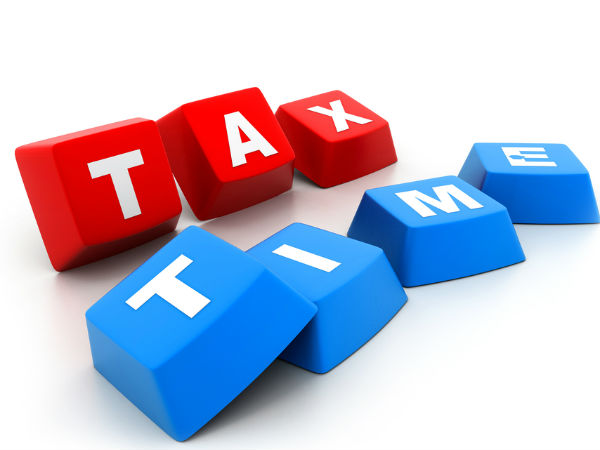 The new ITR -2 for Assessment Year 2016-17 has already been released by the Department with the start of the Assessment Year to provide the taxpayers ample time to file their returns at ease. With the release of the Form, new amendments have also been made in it with new compliances to be complied with by the taxpayers.
The new ITR -2 for Assessment Year 2016-17 has already been released by the Department with the start of the Assessment Year to provide the taxpayers ample time to file their returns at ease. With the release of the Form, new amendments have also been made in it with new compliances to be complied with by the taxpayers.
New ITR 2 – Demands for Pass-Through Income, recently notified for AY 2016-17 now provides new schedules such as, Schedule PTI – Reporting of Pass Through Income received from business trusts or/ and investment funds, Schedule AL – Disclosure for assets and liabilities for ultra-rich AND Schedule TCS – Details of Taxes Collected at Source . Therefore, it’s now time to get the returns filed at earliest as the due date (31st July, 2016) for the same is not likely to be extended by the Department.
Applicability of ITR 2
ITR – 2 can be used by Individuals / HUF’s whose total income includes the following:
- Income from Salary / Pension
- Income from House Property
- Income from Capital Gains
- Income from Other Sources (including winning from lottery and income from race horses)
Further, in a case where the income of another person like spouse, minor child, etc. is to be clubbed with the income of the assessee, this Form can be used where such income falls in any of the above categories.
Non – Applicability of ITR 2
The ITR – 2 CANNOT be used by an Individual / Hindu Undivided Family whose total income includes Income from Business or Profession.
Key Changes in the ITR 2
-
Details of Pass – Through Income received from business trust or/ and investment fund :
New Sections were introduced recently in the Income-tax Act, 1961, wherein it has been provided that any distribution of income by a business trust/ investment fund to its unit holders shall be deemed to be the income of same nature and shall be taxed in the same proportion in the hands of the unit holders.
The new ITR – 2 Form have a new ‘Schedule PTI’ for reporting of the said Pass – Through Income of Business Trust / Investment Fund. Following relevant details and information shall be furnished in the said schedule –
-
Name of business trust/investment fund
-
PAN
-
Head of income
-
Amount of income
-
TDS on such amount, if any.
-
Declaration of value of assets and liabilities by Individuals earning above Rs.50 lakhs:-
The new ITR – 2, mandates individuals, having Total Income above Rs.50 Lakhs, to declare their value of assets and liabilities. A new reporting schedule i.e., ‘Schedule AL – Asset and Liability at the end of the year’ has been introduced in the Form. Assets include immovable assets and movable assets.
Immovable assets: disclosure of cost of land and building.
Movable assets: disclosure of cost of Jewellery, bullion, vehicles, Yachts, boats, aircraft and cash in hand.
However, it has not yet come with the required instructions for determining the cost of the immovable and movable assets. Further, the taxpayers are also required to disclose all liabilities in relation to such assets.
-
TCS (Tax Collected at Source) credit for individual taxpayers:-
To reduce the practice of cash payments for purchase of bullion and Jewellery and for curbing the flow of unaccounted money in the trading system, new provisions were introduced by the Finance Act, 2012. It provides that the seller of bullion and Jewellery shall collect TCS at 1% of sale consideration from buyer if such sale consideration is received in cash and it exceeds:
Bullion: Rs. 2 Lakhs
Jewellery: Rs. 5 Lakhs
However, earlier individual taxpayers were unable to claim the credit of such TCS {as per Form 27D issued by the Collector(s)} in the absence of any row for reporting the same in the ITR Form. But, the newly reformed ITR-2 provides an option to claim such TCS by the individual taxpayers in the ‘Schedule TCS – Details of Tax collected At Source’.
-
Additional deduction for contribution to NPS under Section 80CCD :-
Finance Act, 2015 provided for an additional deduction of up to Rs. 50,000 for investment in ‘National Pension Scheme’ by introducing a new Sub – Section (1B) in Section 80CCD. Therefore, for claiming this benefit, a new row has been introduced in the ITR 2 for individuals, providing them an extra opportunity to save and pay less taxes.
Download ITR – 2 for AY 2016-17.
The said reforms in the ITR Forms introduce new compliances and the challenges for complying all of them fairly and accurately. So, all the taxpayers, falling under the purview of ITR – 2 should start filing their returns and get their accounts prepared to disclose every bit of their income, as and when required by the Income Tax Law.
For any queries or filing your returns, please get in touch with us @ taxmantra.com .
_______________________________________________________________________________________________________________________________________

 Toll Free:
Toll Free:  Contact Us
Contact Us

